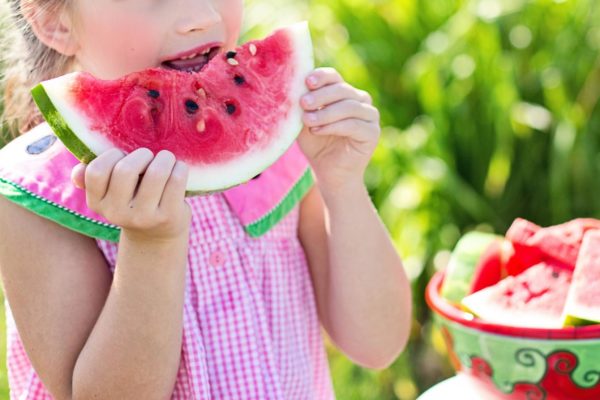Back-to-school time is a busy time for students, parents and teachers. There are countless things to check off to-do lists.
And once school is back in session, there are busy mornings and hectic routines. The grind of homework, after-school activities and commutes can make planning for healthy eating seem daunting.
Luckily, some basic strategies can help steer kids toward healthy choices.
We enlisted Jaimie Davis, an associate professor of nutritional sciences whose research focuses on ways to improve childhood health and reduce obesity, to provide a few ways to help set healthy habits and keep kids fueled as they head into another school year.
Here are her back-to-school nutrition tips.
Get kids involved in packing lunches and food prep

Jaimie Davis: If you pack a school lunch for your kids, you have a lot more control of ensuring that your child has a healthy lunch. While school cafeteria meals have made strides to improve nutrients, most school meals are still super high in refined grains and sugars. If you can pack a lunch, try including kids in the packing process and have them help choose one vegetable, one fruit, a protein and grain.
You can make it into a fun game by having them chose a variety of colors for their foods, for example, one green and one orange/red fruit or veggie. Typically, the more colorful a fruit or vegetable, the more it contains vitamins and minerals, such as Vitamin C and zinc, that have been shown to improve immune function and fend off colds.
Load up on protein to power performance in school

Getting kids to eat protein at lunch is more challenging. A turkey and cheese sandwich on whole wheat bread is a great way of including a protein source with a healthy grain. You can also pack protein-rich snacks like string cheese, beef jerky, nuts and hard-boiled eggs.Davis: Try to make sure your child has a protein source at both breakfast and lunch! Protein intake helps regulate blood sugar and helps your feel full for longer, both of which have been linked to enhanced cognitive and physical health. Make your kids eggs or bacon for breakfast. If you are in a rush, at least have them drink a glass of milk, which is about 8-10 grams of protein.
I would always encourage combining a protein or fat sources with a carbohydrate, as that will keep your child full the longest. For example, an apple with string cheese, a banana with peanut butter, pretzels and hummus, yogurt and granola.
Limit sugary drinks

Davis: Avoid packing a sugar-sweetened beverage like juice or sports drinks in your child’s lunch. Instead, pack a water bottle or milk. Kids do not need all that sugar from those beverages. Sugar-sweetened beverages make up the largest source of added sugar in U.S. children’s diets and only provide empty calories. If your child eats the cafeteria food, then encourage them to choose the white milk, not the chocolate milk.
Try “bento box” style containers for lunches

Davis: Try to avoid using too many prepackaged foods. Any time something comes in a bag, it is more likely to have extra fat, sugar and/or salt added to it. I suggest using a “bento box” for your kid’s lunches with different compartments for protein, carbs, fruits and vegetables. You can put food directly into the divided Tupperware, and you are less likely to include prepackaged items. It might take you a little longer to pack the lunch, but it’s worth the extra effort to make sure your child is getting nutritious food.
Get kids in the garden

Davis: Community and school gardens are great ways to introduce and encourage kids to try new vegetables. If a child is involved in growing and caring for the seed they planted, research shows that the child is more likely to try it, prefer it and continue to eat it. If you don’t have a school garden, try planting some vegetable seeds with your child in your yard, a pot, or a planter box. If you don’t think you have a “green thumb,” try an herb, tomato plant, or radish — those are super easy vegetables to grow, with a short growing season. Just follow the directions on the back of the seed packet.

Jaimie Davis is an associate professor of nutritional sciences in the College of Natural Sciences’ School of Human Ecology and a registered dietician. Her research focuses on ways to reduce childhood obesity, particularly among minority youths.
Davis runs the TX Sprouts program, a research project launched to assess whether bringing gardening and cooking into elementary school classrooms can help reduce childhood obesity.

Funded by the National Institutes of Health, the program is currently collecting data to measure the impact of gardening, cooking and nutrition classes taught to third-, fourth- and fifth-graders at elementary schools across Central Texas. It is based on a previous project Davis worked on in Los Angeles, where she found that gardening and educational interventions reduced obesity and lowered health risks such as high blood pressure.
Even at this early stage, the TX Sprouts program is yielding important insights.
“After preliminary analysis, we show that close to 40 percent of the children are in fact prediabetic at the start of the study, or before intervention,” says Davis. “This is way higher than we anticipated.”




